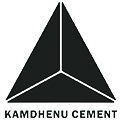Concrete is the backbone of construction, and its strength determines whether your building stands tall or crumbles. In India, the Concrete Mix Ratio plays a crucial role in defining that strength. Among the most common choices are the M20 concrete ratio and the M25 concrete ratio. But what do these grades mean? Simply put, the “M” stands for Mix, and the number (like 20 or 25) indicates the concrete’s compressive strength in megapascals (MPa) after 28 days of curing. M20 = 20 MPa strength, M25 = 25 MPa strength.
Choosing the wrong mix can lead to cracks, costly repairs, or even structural failure. Let’s break down M20 and M25 Concrete Mix Ratios so you can pick the right one for your project.
What Is M20 Concrete Ratio?
M20 concrete ratio = 1:1.5:3
The ratio of M20 Concrete means:
- 1 part cement (the glue that binds everything)
- 1.5 parts sand (fine aggregate that fills gaps)
- 3 parts coarse aggregate (crushed stone/gravel for strength)
Imagine mixing a cake: too much flour (cement) makes it dry, too little makes it crumble. The m20 grade concrete ratio balances these ingredients for reliable, medium-strength concrete.
Why the Ratio Works?
The 1:1.5:3 m20 concrete ratio creates a balanced matrix:
- Cement coats every particle
- Sand fills voids between coarse aggregates
- Aggregates interlock for skeletal strength
Water-Cement Ratio: Critical for workability. For M20, use a 0.5–0.6 water/cement ratio. Excess water weakens concrete.
Where to Use M20 Concrete Mix?
- Residential slabs, beams, and columns (up to 2-3 floors)
- Footings and foundations for homes
- Driveways, pathways, and pavements
- Retaining walls (under 4 feet tall)
- Boundary walls and small drainage works
Real-Life Example: For a 1,000 sq ft. home slab, you’d need ~15 m³ of M20 concrete. At ₹5,800/m³, that’s ₹87,000 – significantly cheaper than M25.
Why builders love it: Easy to mix (even manually), highly workable, and cost-effective. It’s like the dependable family car of concrete! And when a smooth, clean finish is needed, it also highlights some common white cement uses in construction.
What Is M25 Concrete Ratio?
M25 concrete ratio = 1:1:2
The ratio of M25 Concrete means:
- 1 part cement
- 1 part sand
- 2 parts coarse aggregate
Notice the M25 mix ratio uses more cement and less aggregate than M20. This boosts strength but demands precision. The M25 grade concrete is tougher, denser, and engineered for heavy lifting.
Science Behind the Strength
- Higher cement content (360 kg/m³ vs. M20’s 300 kg/m³) creates more binding paste
- Reduced aggregates minimize weak points
- Requires strict water control (0.45–0.5 water-cement ratio)
Pro Tip: For underwater structures (like bridge piers), add waterproofing admixtures to the m25 concrete ratio to prevent corrosion.
Where to Use M25 Concrete?
- High-rise buildings (4+ floors) and bridges
- Industrial floors (factories, warehouses with heavy machinery)
- Flyovers, dams, and columns under high stress
- Parking structures and heavy-traffic roads
- Seismic zones and coastal structures
Cost Insight: A 20-storey building using M25 grade concrete needs ~2,500 m³. At ₹6,500/m³, concrete alone costs ₹1.6 crore – but prevents catastrophic failures.
Also Check out – Types of Cement Grades
Key Differences Table of M20 and M25 Concrete Mix Ratio
Key Differences Table of M20 and M25 Concrete Mix Ratio:
Feature | M20 Concrete | M25 Concrete |
Mix Ratio | 1:1.5:3 | 1:1:2 |
Strength | 20 MPa | 25 MPa |
Cement Used | 300-330 kg/m³ | 340-360 kg/m³ |
Cost | ₹5,500-₹6,000 per m³ | ₹6,200-₹6,800 per m³ |
| Workability | Easy to pour & shape | Stiffer; needs vibrators |
Durability | Good for normal conditions | Excellent for harsh environments |
| Slump Value | 75-100 mm (high flow) | 50-75 mm (stiff mix) |
The Workability & Durability Of M20 and M25 Concrete Ratio
- M20 concrete ratio = Easier to handle. Ideal for DIY projects or complex molds. Sets slower, giving more time for finishing.
- M25 concrete ratio = Less workable but denser. Resists water seepage, chemicals, and heavy loads. Critical note: Requires mechanical vibration to eliminate air pockets.
Durability Test Data:
- M20 lasts 25–30 years in moderate climates
- M25 lasts 40+ years, even in coastal/salty environments
- Fun fact: Structures using M25 grade concrete last 2-3 times longer in coastal areas!
Cost Breakdown: Short-Term vs Long-Term
Scenario | M20 Concrete | M25 Concrete |
Material Cost | ₹87,000 (for 15 m³) | ₹97,500 (for 15 m³) |
| 10-Year Maintenance | ₹30,000 (crack repairs) | ₹5,000 (minimal) |
| Total Cost | ₹1,17,000 | ₹1,02,500 |
Shocking Truth: M25 saves money long-term for heavy-load structures!
Mixing & Curing: Critical Steps Most Get Wrong
For M20 Concrete Ratio
- Mixing: Combine aggregates first, then add cement.
- Water: Add gradually – aim for semi-fluid consistency.
- Curing: Spray water 2x/day for 14 days. Cover with wet gunny bags.
For M25 Concrete Ratio
- Mixing: Use a concrete mixer only. Hand-mixing causes weak spots.
- Water: Measure precisely with gauges.
- Curing: Steam cure for 24 hours, then wet-cure for 21 days.
How to Choose: M20 Concrete Ratio or M25 Concrete Ratio?
Pick M20 if:
- Building a home, shed, or garage under 3 floors
- Your soil is stable (not waterlogged or expansive clay)
- Budget is tight (saves ~15% on concrete costs)
- The project timeline is short (faster curing)
Pick M25 if:
- Constructing multi-story towers (4+ floors) or factories
- The structure faces heavy vehicles/machinery (e.g., forklifts)
- You’re in earthquake/cyclone zones (IS 456:2000 mandates M25+ for Zone IV/V)
- The site has acidic/alkaline soil or saline groundwater
Seasonal Adjustments You Must Know
Monsoon (High Humidity)
- M20: Reduce water by 10%
- M25: Add 1% accelerators to combat slow setting
Summer (Hot & Dry)
- Both mixes:
- Mix at dawn/dusk
- Add ice chips to control water temperature
- Cure with curing compounds to prevent evaporation
Winter (Cold Climates)
- M25: Critical! Use hot water (max 60°C) and insulation blankets to prevent freezing.
Conclusion
The m20 concrete ratio (1:1.5:3) is your go-to for everyday homes. It’s affordable and forgiving. But when pushing heights or handling heavy loads, the M25 concrete ratio (1:1:2) is non-negotiable. It packs extra cement for 25% more strength.
Golden Rules:
- Never compromise on curing – it’s 50% of your concrete’s strength.
- Test cubes at 7 & 28 days (IS 516:1959).
- When in doubt, upgrade to M25 – safety is cheaper than rebuilding.
Still confused between M20 and M25 concrete ratios? Let our experts guide you—Contact Kamdhenu Cement today.
FAQ


